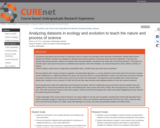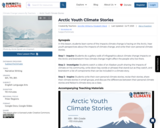
Alternative futures studies are a valuable yet resource-intensive way in which environmental scientists try to conduct informed debates about policies for specific geographic regions. These studies require modeling what the future would look like if different stakeholder groups had their way. The modeling is carried out by applying historical trend data to future projections that are rooted in the preferences of the different groups. Alternative future studies can be controversial due to the limitations of modeling and to the extent to which the models represent fully the different possible scenarios. Yet, they can be especially valuable for decision making about which areas in the region would be most appropriate and most acceptable for the applications of different policies such as development and restoration. Through a series of hands-on classroom activities that are the culmination of a variety of field trips, case studies, and analyses of GIS data about river systems and river restoration options, the students build deep understanding about what alternative futures studies entail and what are the applications of such studies to specific rivers in the Puget Sound area.
(Note: this resource was added to OER Commons as part of a batch upload of over 2,200 records. If you notice an issue with the quality of the metadata, please let us know by using the 'report' button and we will flag it for consideration.)
- Subject:
- Biology
- Hydrology
- Life Science
- Physical Science
- Political Science
- Social Science
- Material Type:
- Activity/Lab
- Provider:
- Science Education Resource Center (SERC) at Carleton College
- Provider Set:
- Teach the Earth
- Author:
- Dan Zalles
- Date Added:
- 09/28/2022













